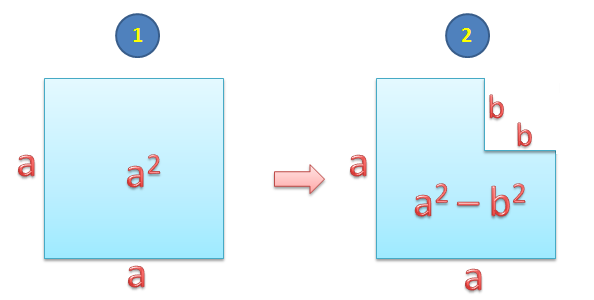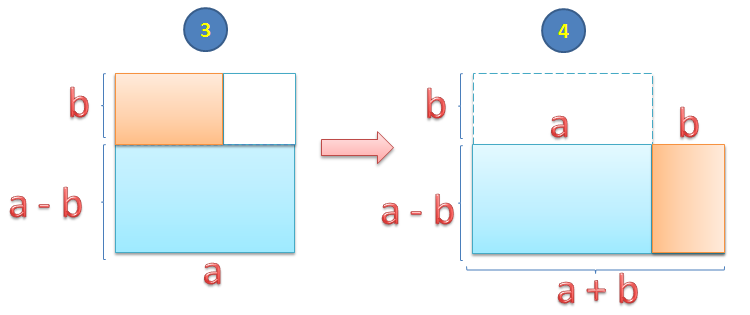Visualizing the Difference of Two Squares

Geometric objects are powerful representations that can be used to visualize algebraic properties of mathematical objects. Proofs without words are examples of such visual representations. In this post, we relate the difference of two squares to the areas of squares and rectangles.
The difference of two squares states that for all numbers and
,
. The visual representation below, however, only covers the condition that
(Why?).
To proceed with the visual proof, we create a square with side length as shown in (1). Then, we cut a square with side length
from its corner as shown in (2). Since the area of the larger square is
and the area of the smaller square is
, the area of the remaining figure is
.
Next, we draw a horizontal line segment cutting the remaining figure into two rectangles as shown in (3). We change the color of the smaller rectangle for clearer representation, and move it to the right hand side as shown in (4).
The resulting rectangle in (4) has length and width
. Its area is
.
The area of the figure in (2) is equal to the area of the rectangle in (4). So, .
We can verify this using the distributive property of multiplication over addition. That is,
.
Simplifying the expression, we have .
That is, which is what we want to show.
